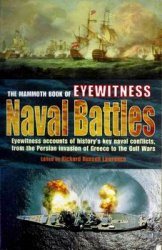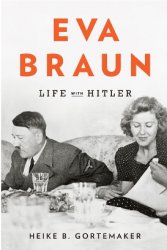Literature after World War II underwent a shift in both style and focus, as it reflected changing attitudes toward race, gender, family, sexuality, youth, and war.
Prior to World War II, American literature experienced a period of rebirth, as a group of authors both home and abroad—including Ernest Hemingway, John Steinbeck, Gertrude Stein, Langston Hughes, and F. Scott Fitzgerald—reacted to the demoralizing violence of World War I, the decadence of the 1920s, and the poverty of the Great
Depression in the 1930s. While many of them continued to write after World War II, only Hemingway, with The Old Man and the Sea (1952), for which he won the Pulitzer Prize for literature the same year, matched his work before the war.
Instead, a new group of authors, most of them born in the 20th century, began to examine the effects of World War II and its aftermath on the United States. The Naked and the Dead (1948), about an infantry platoon fighting on a small Japanese island, was immediately heralded as the first great World War II novel, and its 25-year-old author, Norman Mailer, became an instant celebrity. While he never equaled the success earned by his first novel, Mailer remained a prominent literary figure for the rest of the century. James Jones’s From Here to Eternity (1951), set in Pearl Harbor in the weeks before the December 1941 attack that pulled the United States into the war, was immortalized by the 1953 movie version starring Burt Lancaster and Frank Sinatra. Jones followed the book up in 1962 with The Thin Red Line, depicting the Battle of Guadalcanal, the second in his trilogy about the war (the third of which was published in 1978).
Joseph Heller’s Catch-22 (1961), with its emphasis on satire and its use of surrealism, represented a departure from the common World War II novel. Heller flew 60 combat missions in Europe during the war, and while working in the publishing industry in the late 1950s, he wrote Catch-22, about a U. S. Army Air Corps captain struggling to stay alive while stationed in the Mediterranean during World War II. The title refers to an army regulation that discharges pilots for insanity after flying too many combat missions; to request not to fly, however, means that the pilot is sane and therefore must fly the missions. Heller’s novel became synonymous for no-win situations, and while it was not a rousing critical success, it became considerably popular as a cult novel.
Drama, too, reflected issues of social concern, but only some themes were war-related. With All My Sons (1947), about a son returning home from the war only to discover his father’s role in war profiteering, playwright Arthur Miller examined the effects of the war on the home front rather than the battlefield. Much of American theater, though, dealt with issues that rent apart the fabric of American society. Miller’s most famous play, Death of a Salesman (1949), told the story of Willy Loman, an aging member of the workforce who deludes himself into believing he is a man of true importance. Winning the Pulitzer Prize for drama, Salesman was celebrated as a modern tragedy, proof that the American dream could be just as damaging as it was inspiring. Lorraine Hansberry’s A Raisin in the Sun (1959)—the first play by an African-American woman to be staged on Broadway—told a similar story, as a black father must decide whether to move his family into

Arthur Miller (Library of Congress)
An all-white neighborhood. The plays of Tennessee Williams, most notably the Pulitzer Prize-winning A Streetcar Named Desire (1947) and Cat on a Hot Tin Roof (1955), examined the underlying sexual frustrations of southern white women in a rough and violent society. Other notable plays included Edward Albee’s Who's Afraid of Virginia Woolf? (1962), about a married couple’s night of angry confrontation; Miller’s The Crucible (1953), an allegory set during the 1692 Salem witch trials about the anticommunist paranoia of Senator Joseph R. McCarthy; and the posthumous debut in 1956 of A Long Day’s Journey into Night, Eugene O’Neill’s masterpiece about the American family.
Southern literature received considerable attention during the postwar years. While his best material was written well before World War II, it was only during and after the war that William Faulkner’s work became recognized as one of the most groundbreaking bodies of literature of the 20th century. Known primarily for his series of novels set in the fictitious southern county of Yoknapatawpha, of which The Sound and the Fury (1929) constituted the most prominent, Faulkner examined issues of race, class, family, and gender in the South, earning him the Nobel Prize for literature in 1950. Robert Penn Warren, a prominent southern writer, won the Pulitzer Prize for All the King's Men (1947), which told the story of the rise and fall of a fictitious southern governor based on Louisiana politician Huey P. Long.
The best-recognized and successful southern novel of the period, however, was Harper Lee’s To Kill a Mockingbird (1960). Lee’s father, a respected lawyer in her home town of Monroeville, Alabama, served as the inspiration for Atticus Finch, the father of Scout, Mockingbird’s narrator as an adult looking back on her childhood. The novel’s two parallel storylines follow Atticus as he defends a black man accused of raping a white woman, and Scout, as she and her friends investigate the mysterious recluse Boo Radley, who lives across the street. The novel earned Lee the Pulitzer Prize and praise from the Alabama legislature. It became a staple of high school English curriculums and was made into a classic film in 1962 staring Gregory Peck, who won an Academy Award for his performance as Atticus.
Other authors attacked the materialism and shallowness of post-World War II American life. The Catcher in the Rye (1951), J. D. Salinger’s only published novel, was a popular coming-of-age story that earned its author wide praise. The story follows Holden Caulfield, a self-conscious 16-year-old searching for innocence and honesty in a world filled with “phonies.” Salinger’s use of slang and reliance on dark humor emphasized the sensibilities of the era’s youth, winning him a devoted following of readers both young and old.
While Richard Wright’s Native Son (1940) explored the treatment of African Americans by white society through the sensational storytelling of the protest novel, several other black authors chose to take different approaches to presenting black culture in America. Ralph Ellison’s Invisible Man (1952), his first and only novel, follows an inexperienced southern black youth who travels to Harlem to fight in the Civil Rights movement, only to be ignored by both the black and the white communities. Ellison’s book, a passionately written story about discovering the “black” identity within American society, was considered by critics as one of the most powerful novels of the postwar period, helping to spark the consciousness of the African-American Civil Rights movement. Ellison’s nonfictional counterpart was James Baldwin, whose two autobiographical essays Notes of a Native Son (1955) and The Fire Next Time (1963) match Ellison’s passion in their lucid assessment and ultimate critique of black America, including Wright’s use of the protest novel. Baldwin was also a novelist; his first book, Go Tell It on the Mountain (1953), dealt with African-American issues; his second, Giovanni’s Room (1959), was noteworthy in its frank portrayal of a homosexual man’s journey in Europe.
Issues of sexuality were prominent during this period, no better reflected than in Vladimir Nabokov’s highly controversial novel Lolita (1958), about a middle-aged man’s affair with a 12-year-old girl. Nabokov was born in St. Petersburg in 1899, but left Russia in 1919, lived in Europe until 1940, and became a U. S. citizen in 1945. Though he began writing while still living in Russia, Nabokov was unsuccessful until he published Lolita. When no American publisher accepted the book, it was first published in France in 1955. Once published in the United States, it made its way to number one on The New York Times bestseller list, and it was heralded as a brilliant dark comedy.
No stranger to controversy themselves, the writers of the Beat Generation also tackled heretofore taboo subjects like drug use and homosexuality. Through such works as Allen Ginsberg’s long-form poem Howl (1956), Jack Kerouac’s stream of consciousness novel On the Road (1957), and William S. Burroughs’s highly experimental novel Naked Lunch (1961), the Beats (as they were christened by Kerouac) rejected mainstream society and mainstream writing in favor of finding an alternative for both. Precursors to the counterculture of the 1960s, the Beats preferred a lively, exuberant style that underscored their critique of American culture.
Norman Mailer, who became known more for a style of journalism called the “nonfiction novel” than for fiction writing, examined followers of the Beats in his essay “The White Negro” (1957). He noted that this segment of white youth co-opted both African American slang and sensibility. Mailer wrote several other nonfiction books, including The Armies of the Night (1968) about his arrest at a demonstration in October 1967 as part of the antiwar movement. Truman Capote, known earlier for his novels Other Voices, Other Rooms (1948) and Breakfast at Tiffany’s (1958), is best known for his nonfiction work, In Cold Blood (1966), about a 1959 multiple murder in Kansas. Tom Wolfe won wide praise with his book about author Ken Kesey and the countercultural hippies in The Electric Kool-Aid Acid Test (1968), in which he described the impact of getting stoned on the drug LSD.
Nonfiction works critiquing cultural attitudes and consumerism of the 1950s and 1960s were popular during this period. Vance Packard exposed the tricks of the advertising trade in The Hidden Persuaders (1957), and he went on to write several other books analyzing various aspects of U. S. society. Biologist Rachel Carson, in Silent Spring (1962), examined the damaging effects of pesticide use, raising public awareness about the dangers of pollution in general. Consumer advocate Ralph Nader’s Unsafe at Any Speed (1965) criticized the American automobile industry, and the General Motors Corporation’s Corvair in particular, for their lack of safety precautions, leading directly to the passage of the National Traffic and Motor Vehicle Safety Act of 1966. Betty Friedan’s The Feminine Mystique (1963) depicted women’s dissatisfaction with their traditional role within the family, and the book is seen as one of the central works of the movement for women’s status and rights in the middle to late 1960s.
Popular genre novels, mass-produced in paperback, also became more prevalent during the postwar period. SCIENCE-FICTION writer Ray Bradbury’s The Martian Chronicles (1950) served as a cautionary tale about materialistic humans from Earth devastating an idyllic society on Mars. Bradbury’s novels and short stories continued to be popular well into the final years of the century. Pulp novelist Mickey Spillane’s I, the Jury (1947) constituted his first hit in his series of books, known for their violent content and sexual innuendo, featuring detective Mike Hammer. Selling for 25 to 50 cents a copy, the books became among the best-selling works of fiction up to that point in publishing history. Children’s mystery novel series featuring the Hardy Boys and Nancy Drew, created by syndication publisher Edward Stratemeyer in the 1920s and 1930s, were widely popular among young readers after World War II, and the characters quickly became part of POPULAR CULTURE. Grace Metalious’s Peyton Place (1956) exposed the dark, unseemly underbelly of what on the surface appeared to be a quaint New England town. The book sold 10 million copies in paperback by 1966; its progressive treatment of women contributed to both its success and its reputation as a harbinger of the feminist movement in the 1960s.
Poetry after World War II went through a transition period, moving from the influences of the rigid form of T. S. Eliot into a more open, emotional style reminiscent of poets like Walt Whitman and D. H. Lawrence but unique unto themselves. The 1940s saw poetry collections like Robert Lowell’s Lord Weary's Castle (1946) and Theodore Roethke’s The Lost Son and Other Poems (1948) adhere to Eliot’s use of formal structuring and lyricism. By the 1950s, however, many poets turned to an open, unfolding style using direct and prosaic language. Lowell’s Life Studies (1959) and For the Union Dead (1964) typified this style, and Lowell himself influenced poets like Anne Sexton, known for her confessional poems To Bedlam and Part Way Back (1960) and All My Pretty Ones (1962). Beat poets like Ginsberg, Lawrence Ferlinghetti, and Gregory Corso also popularized the new style.
Further reading: Marcus Cunliffe, ed., American Literature since 1900, vol. 9 (New York: P. Bedrick Books, 1987); David Halberstam, The Fifties (New York: Villard Books, 1993); Robert F. Kiernan, American Writing since 1945: A Critical Survey (New York: Frederick Ungar Publishing, 1983).
—Adam B. Vary




 World History
World History









